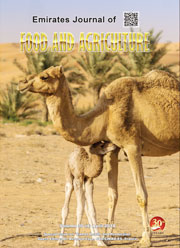MICROFLORA IDENTIFICATION OF FRESH AND FERMENTED CAMEL MILK FROM KAZAKHSTAN
DOI:
https://doi.org/10.9755/ejfa.v26i4.17641Keywords:
Camel, Fermented camel milk (shubat), LAB, Yeast, PCR, DDGE, KazakhstanAbstract
In Kazakhstan where Bactrian camel, dromedary camel and their hybrids are cohabiting within same farms, the consumption of camel milk is very popular because its medicinal and dietary properties. This milk is consumed under fermented form, called shubat. Shubat is still very often made on a small scale in the steppe with a fermentation step driven by wild bacteria. Camel milk and shubat were sampled from 4 regions with high number of camel population. As the whole, 26 samples were obtained from 13 selected farms representing the variability of the farming system. Isolated LAB strains were identified by method of a polymorphism determination of 16S ribosome DNA. PCR with using two different pairs of amorces (338f/518r; W001/23S1) was done. Majority of microflora were cocci in a both milk products. The following microorganisms were identified: Enterococcus durans ; Enterococcus faecalis; Enterococcus faecium; Lactobacillus casei; Lactobacillus casei subsp. casei; Lactobacillus curvatus; Lactobacillus kefiri; Lactobacillus paracasei; Lactobacillus sakei; Lactococcus lactis subsp. lactis; Leuconostoc mesenteroides. Diversity of microorganisms in a both products was similar, but percentage of each microorganism changed during fermentation process. Yeast biodiversity in shubat was studied by using denaturing gradient gel electrophoresis (DGGE). Target DNA bands were identified according to the reference species scoring. Comigrating bands present in the DGGE profiles were resolved by species-specific PCR. The dominant yeasts in both products included Kazakhstania unispora, Saccharomyces cerevisiae and Kluyveromyces marxianus. Frequently isolated yeast species were Dekkera bruxellensis and more rarely Galactomyces geotrichum. The results of microflora identification in these products provide a theoretical foundation for developing starter cultures.










 .
. 